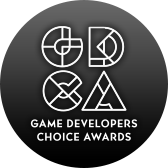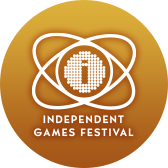In advance of GDC Next, taking place in Los Angeles in early November, GDC Director of Online Community Patrick Miller asked Dynamighty co-founder David Nottingham about the creative and artistic influences that inspired PlayStation 3, mobile, tablet and PlayStation Vita title CounterSpy.
Nottingham, himself a LucasArts veteran, will be speaking in a GDC Next 10 talk titled "How I learned to Stop Worrying and Love Making CounterSpy" at next month's show.
Patrick Miller: Why decide to start a new studio and develop an original game at the same time instead of tackling each ridiculously difficult task one at a time?
David Nottingham: I've ALWAYS been most passionate about creating new IP and I think our industry has so much potential still to explore a broad canvas of original experiences. John Elliot (my co-founder) and I worked at LucasArts together where we were both hired to build a team to create new IP for the studio.
That experience together, coupled with the emergence of digital platforms that allowed games to be created by smaller teams (in many ways reminiscent of the earlier industry times before triple-A got so huge), inspired us to strike out on our own.
I think the only way to build anything successfully is to do the thing that you are most passionate about, so for John and I that was always going to be creating something new. It's definitely hard! Doing the two (new studio and building a game) at the same time has been incredibly taxing on both of us but being afraid doesn't need to be a barrier to trying to do something, sometimes that's exactly why you need to make a go of it.
PM: Tell me a bit about your team; it seems to me that ten people in a new indie studio is large-ish. How'd you decide on the right number of people for the game you wanted to make (or the other way around)?
DN: Originally it was just John and I and for about a year; we were doing contract work to stay afloat while we invested our energy into prototyping, as well as laying out a roadmap for what we wanted the company to be. We knew we wanted to build a company that could be a great creative home for others and a place that embodied the values we felt were really important to making games. We have a background on bigger teams and we'd also worked on smaller projects of about the team size we are now.
For the longest time it was just myself, John, and Mark Holmes (our art director) but the game we wanted to build was pretty much outside the scope of what just the three of us would have been able to do. In particular, we made the decision early to build a game using 3D assets. We needed 3D modeling, complex character animation, rigging, plus we needed unique rendering techniques to get the look we wanted, then creating a procedural content pipeline for the game. When you start to look, it's a big list!
Once Sony got involved, we were able to start hiring and grow the team to the size where we felt like we could hit all those different areas that needed love. I can also tell you, the team doesn't feel overly large. We could always do with a couple more bodies to help out, so we've been really pushing ourselves, and particularly with our first game we want to make a good impression.
PM: What inspired CounterSpy's aesthetic, and how'd you turn those inspirations into something unique? Did it always look like that? How'd you iterate on it?
DN: It definitely did not always look like that! For the longest time, John and I were prototyping with 'found' assets -- whatever we had or could create. Our levels were predominantly black platforms with blocks. A friend lent us a character model and another friend gave us a run cycle animation. We didn't even have a walk cycle for the game, we just slowed down his running animation. It looked terrible, but was a great tool for us to prototype with and not get distracted by pretty graphics.
The visuals were always going to be a big part of our focus as a studio as I am super passionate about stylized visuals. The last game John and I worked on was a puzzle platformer called Lucidity, and the visuals on that game were something I felt really proud of.
Having Mark Holmes join was the key turning point for us there. Mark had been at Pixar for 16 years, doing production design and art direction. He'd worked on many of my favorite movies there, such as The Incredibles, Wall-E. Mark knew what we were going for and shared our passion, but had the skills & the track record to know how to bring it to life.
In terms of inspiration, we looked at a lot of mid-century design, graphics. Saul Bass of course the design of Bond but also a wider net. The contemporary art, culture and architecture of that era that inspired the Bond movies. We were also inspired by our friend Celine Desrumaux, who created an amazing animated short called Countdown, and did some early concept art for us, as well as the work of Kevin Dart, whose amazing Yuki-7 series both inspires and intimidates us. For the longest time, we were worried about following too much in his steps but we found that in going to the same original source material of the era, we were able to develop our own voice for the game.
PM: How about thematic inspirations for CounterSpy? What made you want to make this game?
DN: A big inspiration for me was Impossible Mission, a game from Epyx that released in 1984.
I clearly remember stepping into my local computer store and a crowd had gathered around this CRT TV just gawping at the game. We were all mesmerized by how beautiful it looked. It had smooth animation that was rotoscoped, and I'd never seen anything like it. I spent many days lost in that game and it's completely burned in my brain.
Interestingly, I've had a lot of people who play the game say it reminds them of Rolling Thunder, which was a game I never played when it came out.
In terms of movies & TV, I grew up on old spy TV shows and movies such as The Man from U.N.C.L.E, as well as stuff with a darker tone such as The Ipcress Files or The Prisoner.
However, the biggest influence in terms of the tone we want to establish may have been Dr. Strangelove, which is such a masterpiece. What I find works so well in that film is how it plays the absurd totally straight. They don't wink at the camera, and everyone in that world believes the seriousness of the situation.
We were also inspired by real world historical events. In particular, the US's plans to launch a nuclear strike on the moon (Project A-119), which they developed in the late '50s before ultimately deciding that putting a man on the moon would be a better demonstration of Western progress to the world.
The Doomsday Clock is of course a reference to the real world Doomsday Clock that was created in 1947 to show how close we were to Armageddon. I think we've been pretty close to five minutes to midnight for a while. I grew up in the '80s Cold War of Reaganism, before "tear down this wall", when the threat of Nuclear War seemed very close.
I remember in the '80s, the West conducted a full scale military exercise in Europe that almost kicked off WW3. The Soviets were freaking out thinking it was precursor to a first strike. Records released since show that the Soviets fully believed that the US was planning a first strike and had their own plans in place that would try and pre-empt the anticipated strike with a first strike of their own. The Doomsday Device from Dr. Strangelove actually existed in the form of Dead-Hand, the Soviets automated nuclear response to any nuclear strike on their country.
I guess it all comes down the the fact that whatever the craziest absurd Bond villain plot might be, you can be sure a government somewhere, at some point in time, has instituted some plan just as absurd yet terrifying!
PM: Developing an action game that plays nicely on PS3/Vita as well as iOS/Android is no mean feat. How'd you tune the controls (and everything else) to make sense on both touchscreens and gamepads?
DN: Design-wise, I think this is one of the most interesting challenges that we have taken on. We were really excited to find Sony shared our own interest in creating experiences that could work on mobile as well as console or Vita. We've long felt that there are experiences that can work on both, as long as you approach them in the right way.
We're quite proud of how the game controls on touch devices. We get a lot of positive feedback from people when we playtest it, and I am going to be really interested to see how people take to it upon release.
Another difference we've had to factor in is the fact that game sessions on mobile tend to be much smaller compared to a console. We've designed the game itself to be pretty compact. It's definitely a 'jump in' snackable type of game, so we think it will hold up well on mobile, while on console obviously we can push things a little bit more. The console version will have more level content to try and sate those longer play sessions. We've also built in features that reward the player that links the mobile version with their console or PS Vita, so there are persistent elements to the game that get shared across all devices.
Online registration is in full swing for GDC Next and the co-located ADC; register now and save up to $200 on ADC, GDC Next, or a combined VIP All Access Pass. For all the latest news on GDC Next, subscribe for updates via Facebook, Twitter, or RSS.
For more on the GDC Next 10 session series, read the GDC Next 10 listings, and a previous interview with Next 10 speaker Nathan Vella (Capy Games).



